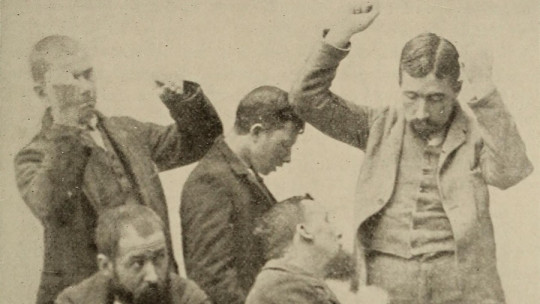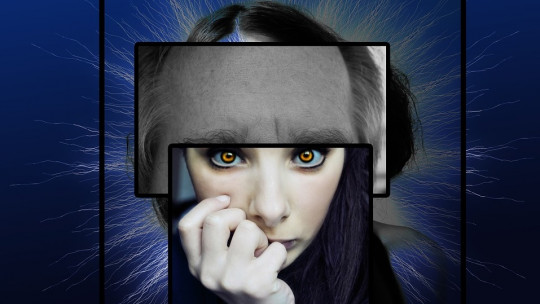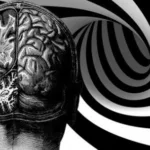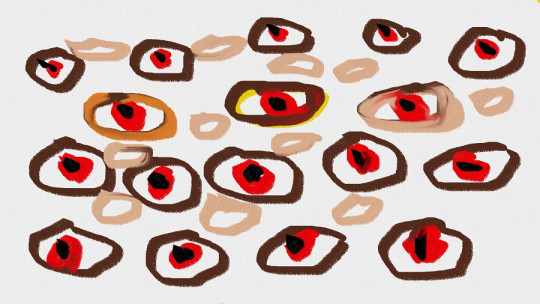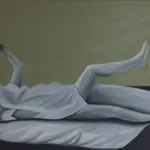Schizophrenia is a mental disorder that can be very disabling, and affects between 0.3%-0-7% of the world’s population. However, it is not a single disorder; there are different subtypes of schizophrenia. In this article we will learn about catatonic schizophrenia characterized by alterations at the motor level.
In addition, we will see what its usual characteristics are, its typical symptoms, the causes that can trigger it and the treatments that are applied.
Schizophrenia: what is it?
Schizophrenia is a psychotic disorder which causes two types of symptoms: positive and negative. Positive symptoms encompass manifestations “due to excess”, and negative symptoms, those that are “defective”.
Thus, while the positive ones include symptoms such as hallucinations, delusions and disorganized behavior, the negative ones include affective flattening, anhedonia and apathy, among others.
On the other hand, schizophrenia also causes cognitive symptoms such as attention difficulties or memory problems.
Subtypes
However, there is no single type of schizophrenia, and in the first descriptions of the disorder, made by Emil Kraepelin (German psychiatrist), the author began to talk about different subtypes of schizophrenia. Specifically, E. Kraepelin differentiated three subtypes: paranoid schizophrenia, catatonic schizophrenia and hebephrenic or disorganized schizophrenia.
These subtypes are differentiated by the types of symptoms predominant in the condition; Thus, paranoid schizophrenia fundamentally involves positive symptoms (hallucinations, delusions…), catatonic, motor symptoms such as catatonia and hebephrenic, disorganized behavior and language.
A little later, the Swiss psychiatrist Eugen Bleuler added a fourth subtype to those already proposed by Kraepelin: simple schizophrenia (with only negative symptoms).
These subtypes of schizophrenia (except simple schizophrenia) appear in the DSM-IV-TR (Diagnostic Manual of Mental Disorders), but they disappear in the DSM-5 (where we can only find the disorder schizophrenia, among other psychotic disorders, and simple schizophrenia in the annexes).
This does not mean that these subtypes of schizophrenia cannot continue to appear in the clinical population. In addition, it should be noted that hebephrenic subtype schizophrenia is also currently found in the ICD-10 (International Classification of Diseases), as well as simple schizophrenia.
Catatonic schizophrenia: common characteristics
Catatonic schizophrenia, as we have seen, is a subtype of schizophrenia proposed by Emil Kraepelin. This type of schizophrenia is characterized by having an average prognosis (between good and bad), situated between paranoid (good prognosis) and disorganized (bad prognosis).
This is a disorder that is currently rare in developed countries. The person with catatonic schizophrenia usually presents ambivalent symptoms focused on motor skills
Generally the subject automatically obeys orders (or just the opposite may occur, presenting extreme negativism and not obeying anyone’s orders or instructions); Furthermore, the individual also usually acts with great perseverance. On the other hand, catatonic schizophrenia It usually also includes hallucinatory and delusional symptoms
Let’s see in detail the characteristic symptoms of this subtype of schizophrenia.
Symptoms
The symptoms of catatonic schizophrenia consist mainly of motor disturbances. These translate into:
1. Motor immobility
Also called stupor , motor immobility makes the patient with catatonic schizophrenia unable to execute any type of movement. You can stay “stuck” without moving or saying anything.
2. Excessive motor activity
However, the opposite symptom to the previous one may occur, and the patient may present excessive motor activity, appearing unable to sit still, moving continuously and with some agitation.
3. Extreme negativism
extreme negativity translates into resistance on the part of the subject , to follow any order you receive from another person; This resistance is apparently unmotivated. It can also include maintaining a rigid posture against attempts to move it by others, as well as mutism.
4. Peculiar voluntary movements
The patient with catatonic schizophrenia may voluntarily present peculiar movements, such as mannerisms (or mannerisms), consisting of gestures “unique” to the individual, exaggerated (as if the person were acting), and which are usually repetitive and short. These gestures accompany normal activity, and They are simpler than stereotypes They typically appear in schizophrenia.
5. Echolalia
Echolalia consists of the repetition of the last thing the interlocutor said (the last word, phrase…). These, in turn, can be immediate (they occur immediately) or delayed (they occur hours, days or weeks after the individual has heard them).
Echolalia, in addition to being typical in catatonic schizophrenia, also appears very frequently in children with autism spectrum disorder (ASD).
6. Echopractices
Echopraxias are similar to the previous symptom, but in the motor or gestural field; its about the repetition, by the subject, of the gestures that the subject sees the interlocutor perform
Causes
The causes of catatonic schizophrenia, like any other type of schizophrenia, have been related to multiple factors and from multiple fields of study (it is a disorder of multifactorial origin).
1. Biological theories
Biological theories, for their part, propose an important genetic component in the origin of schizophrenia, with the prevalence of schizophrenia being higher in children of biological mothers with schizophrenia.
2. Psychological theories
The psychological theories propose a vulnerability-stress model where an interaction occurs between a possible individual vulnerability in the patient and the level of stress suffered by the patient.
Systemic theories, for their part, plan the double bind theory (Palo Alto School: Bateson & cols.); This theory maintains that the double bind is formed by contradictory messages and that they occur within an intense relationship that the patient cannot avoid or comment on.
3. Neurochemical theories
At a neurochemical level, it has been talked about a dopaminergic subcortical hyperactivation in the mesolimbic pathway (related to the positive symptoms of catatonic schizophrenia; in this case, motor disorders).
Regarding brain alterations, structural alterations detected by a CT scan have been proposed to be present in people with schizophrenia (dilation of the third ventricle and lateral ventricles, cerebellar atrophy, inverted hemispheric asymmetry, cortical atrophy, decreased radiodensity of the tissue in various areas. of the brain such as the hippocampus, etc.).
Within these alterations, functional alterations such as hypofrontality (dysfunction of the prefrontal-dorsolateral cortex) and dysfunction of the basal ganglia have also been found.
4. Viral theories
Viral infections have also been discussed as causing schizophrenia (although they have never been proven), and alterations in neurodevelopment.
The latter include an alteration in brain formation during pregnancy or childhood, which does not manifest until the structures involved have completely matured and appear a source of stress or major hormonal changes
Treatment
The treatment of catatonic schizophrenia should be directed towards the treatments used for schizophrenia itself. Mainly psychosocial treatment is chosen which seeks the reintegration (or insertion) of the individual into society, through protected employment procedures, for example (and among others).
On the other hand, the psychological therapies used (which ideally will also include families), focus on social skills training (EHS), psychoeducational intervention (at the family level), cognitive rehabilitation and belief modification therapies (centered in treating delusions and hallucinations).
Furthermore, in psychological therapy, It seeks to enhance the patient’s coping strategies as well as promoting their self-esteem, self-concept and autonomy.
In the case of catatonic schizophrenia, furthermore, pharmacological treatment (which must always be regulated, regardless of the subtype of schizophrenia being treated), will be aimed at palliating or softening the typical motor symptoms of this subtype of schizophrenia. This is why adherence to treatment should always be worked on, through psychoeducational techniques and positive reinforcement, for example.

